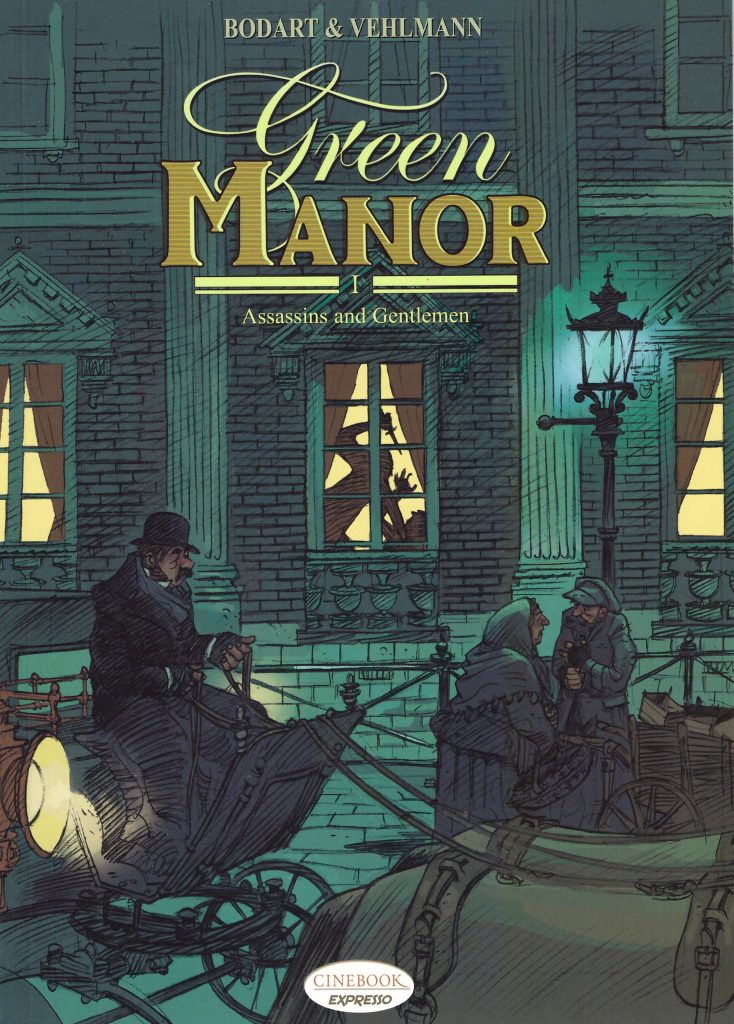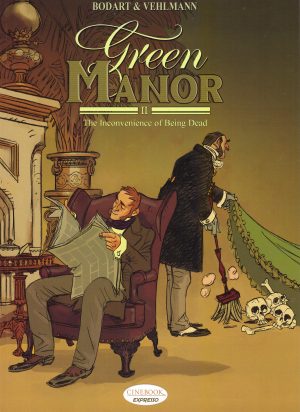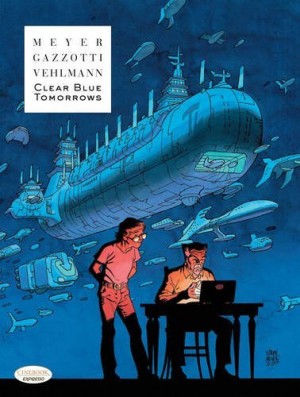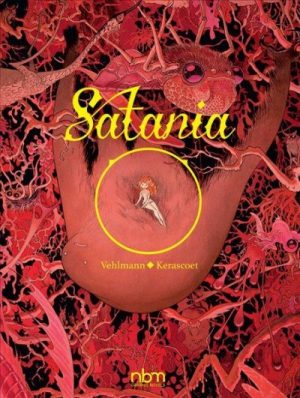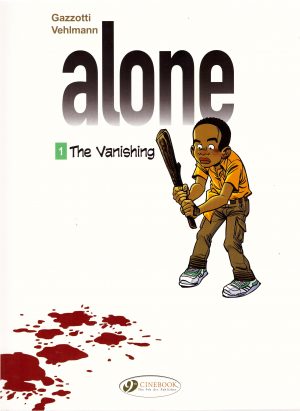Review by Ian Keogh
Green Manor is a traditional English gentleman’s club in the late Victorian era. There’s a sly sense of humour at work on Fabien Vehlmann’s part, populating the club with a selection of upper class rogues, the type who become fascinated at the thought of committing the perfect murder or challenging detectives. He certainly captures the sense of arrogance and entitlement of those among Britain’s upper classes who consider themselves somehow superior on the basis of inherited fortunes stemming from the time wealth distribution came from toadying to a monarch. To these people the lives of anyone they perceive to be of a lower social class have no meaning.
A brief framing sequence introduces and closes an anthology, in which Vehlmann displays his storytelling virtuosity in seven page segments. Each concerns an actual or proposed killing, and the tone varies from the procedural mystery of attempting to reveal or locate a killer to the comedy of that perfect murder. There are genuinely creepy and disturbing moments, many of them within a story about a painter discovering a secret in someone else’s painting, which sustains a mood of gothic horror in small details.
The overall tone of Green Manor, however, is effectively determined by artist Denis Bodart. What might have been creepy, shadow-led criminal horror with a pitch black dark humour is given a light comedy feel by Bodart’s cartooning. It’s excellent, and personality-driven, but works against more serious plots, with exaggerated mugging and reactions. At times it resembles the loose work of Steve Parkhouse, but he can adapt his style to darker topics.
Green Manor is clever, but only rarely compelling. It was successful enough in France to result in two sequels, combined in the single English language edition The Inconvenience of Being Dead.
